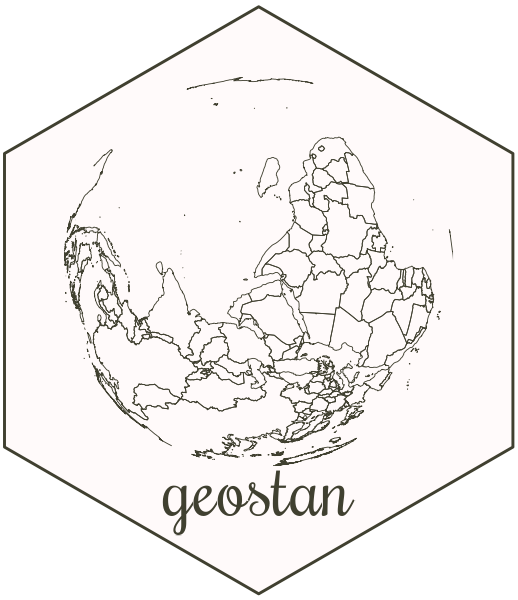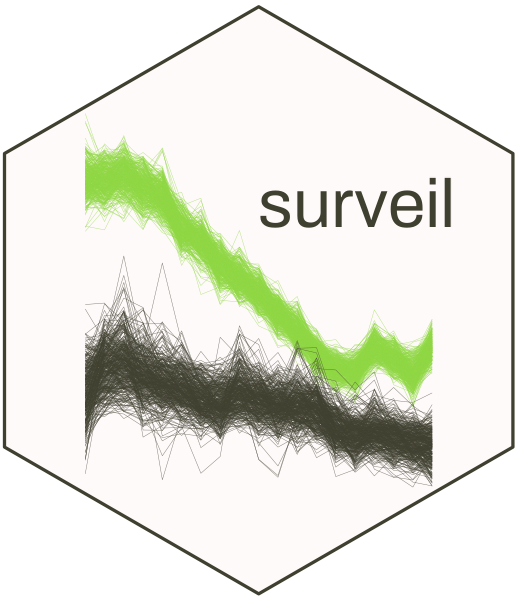Software
This page lists statistical software that I have developed, mostly from my time as a grad student at UT Dallas.
The geostan R package

Supports a complete spatial analysis workflow: exploratory analysis, modeling, diagnostics, and visualization.
- Spatial regression and econometric models
- For data recorded across areal units (states, counties, or census tracts) or networks.
- Spatial analysis tools
- For visualizing and measuring spatial autocorrelation and map patterns, for exploratory analysis and model diagnostics.
- Observational error
- Incorporate standard errors (e.g., from American Community Survey estimates) into any geostan model.
- Missing and Censored observations
- Vital statistics and disease surveillance systems like CDC Wonder censor case counts that fall below a threshold number; geostan can model disease or mortality risk for small areas with censored observations or with missing observations.
- The RStan ecosystem
- Interfaces easily with many high-quality R packages for Bayesian modeling.
- Custom spatial models
- Tools for building custom spatial or network models in Stan.
- Online documentation
- https://connordonegan.github.io/geostan
- Package vignette
- Spatial data analysis with geostan
- Publications
-
Donegan, Connor (2022). geostan: An R package for Bayesian spatial analysis. The Journal of Open Source Software 7, no. 79: 4716 DOI:10.21105/joss.04716
Donegan, Connor (2021). Building spatial conditional autoregressive (CAR) models in the Stan programming language. OSF Preprints. DOI:10.31219/osf.io/3ey65
Donegan, Connor, Yongwan Chun and Daniel A. Griffith (2021). Modeling community health with areal data: Bayesian inference with survey standard errors and spatial structure International Journal of Environmental Research and Public Health 18, no. 13: 6856. DOI:10.3390/ijerph18136856 Supplementary material: https://github.com/ConnorDonegan/survey-HBM.
Donegan, Connor, Yongwan Chun and Amy E. Hughes (2020). Bayesian estimation of spatial filters with Moran's eigenvectors and hierarchical shrinkage priors. Spatial Statistics 38: 100450. DOI:10.1016/j.spasta.2020.100450 Pre-print URL: https://osf.io/fah3z/
The surveil R package

Models for time trends in mortality or disease incidence, for routine public health tasks. An accessible alternative to joinpoint regression.
- Age-standardized rates
- Automatically fit and combine age-specific models for directly age-standardized rates.
- Percent change analysis
- Simple methods for getting cumulative percent change and period-specific percent change statistics.
- Professional figures
- Publication-quality default graphics
- Online documentation
- https://connordonegan.github.io/surveil
- Package vignette
- Modeling time trends for disease monitoring studies
- Publications
-
Donegan, Connor, Amy E Hughes and Simon J Craddock Lee (2022). Colorectal Cancer Incidence, Inequalities, and Prevention Priorities in Urban Texas: Surveillance Study with the "surveil" software package. JMIR Public Health & Surveillance 8, no. 8: e34589 DOI:10.2196/34589 PMID:35972778
Other code
Donegan, Connor and Mitzi Morris (2021). "Flexible functions for ICAR, BYM, and BYM2 models in Stan.” Code repository. https://github.com/ConnorDonegan/Stan-IAR
Functions in the R and Stan programming languages that make it easier to implement the BYM and BYM2 spatial models in RStan. The code addresses multiple challenges that arise when using a disconnected graph structure with the intrinsic conditional autoregressive model. The functions support the construction of custom spatial models in Stan, and are also used by the geostan R package.